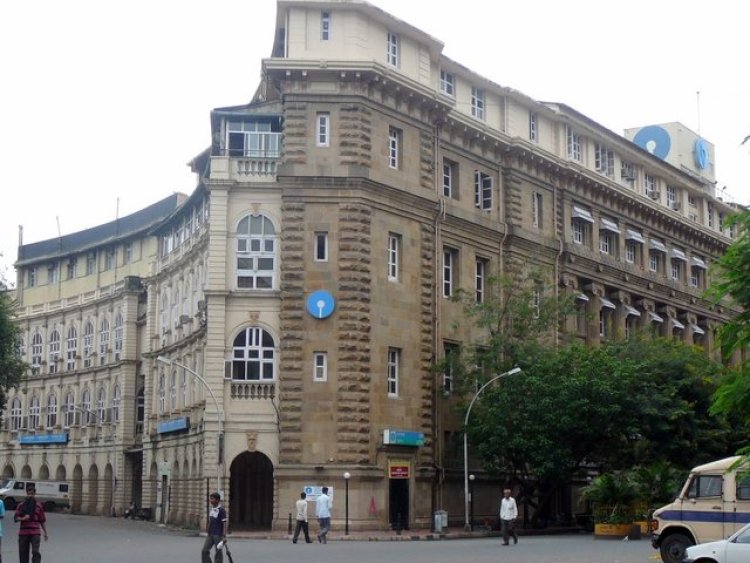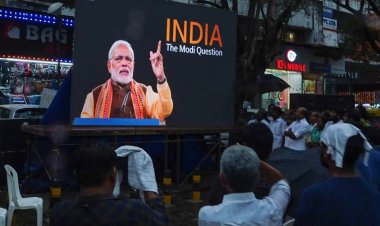India : debt, banking crisis,...
Sushovan Dhar is interviewed by Eric Toussaint about the debt situation and the banking crisis in India, and other topics.

Eric Toussaint : In your presentation at the 9th CADTM South Asia Conference in Colombo you explained that India’s real debt was higher than the figures given by the authorities, would you please explain what this is about?
Sushovan Dhar : As you are aware, the Reserve Bank of India’s figures for September 2022 stand at US$ 617.1 billion as of June 2022 [1]. The same press release stated “Valuation gains due to the appreciation of the US dollar vis-à-vis Indian rupee and major currencies such as yen, SDR2, and euro were placed at US$ 14.4 billion. Excluding the valuation effect, external debt would have increased by US$ 11.9 billion instead of a decrease of US$ 2.5 billion at end-June 2022 over end-March 2022 [2]". The debt-to-GDP GDP
Gross Domestic Product Gross Domestic Product is an aggregate measure of total production within a given territory equal to the sum of the gross values added. The measure is notoriously incomplete; for example it does not take into account any activity that does not enter into a commercial exchange. The GDP takes into account both the production of goods and the production of services. Economic growth is defined as the variation of the GDP from one period to another. ratio fell from 19.9 percent at the end of March 2022 to 19.4 percent at the end of June 2022 [3]. If we consider the total external debt of the country as the only source of debt, the figures look extremely healthy, perhaps leaving room for complacency as has been exhibited by various official sources and the media. However, the figures express only one part of reality. There is a huge internal debt, and it has been steadily increasing. The total government debt Government debt The total outstanding debt of the State, local authorities, publicly owned companies and organs of social security. went from 68.8% of GDP to a worrisome 85.3% of GDP between 2016 and June 2021 [4]. In monetary terms, the national debt has increased from US$ 1.5 trillion to US$ 2.4 trillion. This is not a very comfortable figure. While the effects are not as dramatic as a balance Balance End of year statement of a company’s assets (what the company possesses) and liabilities (what it owes). In other words, the assets provide information about how the funds collected by the company have been used; and the liabilities, about the origins of those funds. of payment crisis or an external debt shock, the results are not positive for the economy as a whole. It leads to an inflation Inflation The cumulated rise of prices as a whole (e.g. a rise in the price of petroleum, eventually leading to a rise in salaries, then to the rise of other prices, etc.). Inflation implies a fall in the value of money since, as time goes by, larger sums are required to purchase particular items. This is the reason why corporate-driven policies seek to keep inflation down. that hurts the working classes much more than the upper class. Additionally, the loss of real wages leads to reduced demand. Higher debt servicing leads to a cut in government expenditure, either for job creation or for social security.
Eric Toussaint : Regarding the health of India’s public banks, which still have a majority share Share A unit of ownership interest in a corporation or financial asset, representing one part of the total capital stock. Its owner (a shareholder) is entitled to receive an equal distribution of any profits distributed (a dividend) and to attend shareholder meetings. in the country’s banking sector, you explained that the level of non-performing loans or non-performing assets was worrying. Please explain what NPL or NPA means.
Sushovan Dhar : In India, NPAs, or Non-Performing Assets refer to loans or advances by banks or other financial institutions for which the principal or interest Interest An amount paid in remuneration of an investment or received by a lender. Interest is calculated on the amount of the capital invested or borrowed, the duration of the operation and the rate that has been set. payment remained overdue for a period of 90 days. Banks are required to further classify these NPAs as Substandard, Doubtful and Loss assets.
Eric Toussaint : It is important for the Indian and foreign public to understand who is responsible for these outstanding loans as it is the large private companies that are the worst payers. Would you please explain the situation to the readers?
Sushovan Dhar : The responsibility for the NPAs lies with large Indian corporations. Fugitive diamantaire Mehul Choksi’s company, Gitanjali Gems Ltd., tops the list of the top 25 wilful defaulters, followed by Era Infra Engineering, Concast Steel and Power, REI Agro Ltd and ABG Shipyard Ltd [5]. In the last four years, the total number of willful defaulters was 10,306. The highest number of 2,840 wilful defaulters reported during 2020-21 was followed by 2,700 the next year. [6]
As many as 38 economic offenders who defaulted on repaying borrowed amounts to banks fled the country in a span of five years, from January 1, 2015, to December 31, 2019, under the government’s watch [7].
Eric Toussaint : Would you please explain these three demands?
A. Recovering the damage caused by the capitalists at the expense of the public banks, from the overall wealth of the major shareholders of the groups in question;
B.Refusing to make taxpayers or depositors, 92% of whom have savings of less than 1,00,000 rupees), bear the burden of the clean-up;
C. Prosecute the top managers of the offending banks and the beneficiaries;
Sushovan Dhar : The onus of recovering the losses that the banks have suffered on account of such defaults lies with those who have defaulted and not with the general public. The properties of these offenders must be attached and auctioned off by the Indian governments to recover the amount syphoned by them. Therefore, we must eliminate the limited liability provision that limits owners’ or directors’ legal accountability for the debts of their company to the value of their shares. Their personal assets are protected, allowing them to syphon off the money that was either stashed away overseas or converted into assets through various illegal entities.What now happens is that willful defaulters walk away while the bank losses are recovered through fresh capital infusions by the government or other means at the expense of taxpayers.It must be noted that almost everyone in India, including the poorest sections of the population, is in the tax net because of the very high prevalence of indirect taxes.
Alongside, top managers and directors of the banks, including high government officials, must be prosecuted for their collusion in such “wilful” defaults. The banker-borrower nexus has long been a problem for the Indian banking industry. The PNB heist exposed a deeper connection than anticipated. The bank scams are are not just the product of a few junior personnel but, a deeper systemic fraud.Eric Toussaint : What is the debt situation of working class families?
Sushovan Dhar : The liabilities Liabilities The part of the balance-sheet that comprises the resources available to a company (equity provided by the partners, provisions for risks and charges, debts). of households rose by Rs 6 trillion in 2021–22 to Rs 83.65 trillion, data from the Reserve Bank of India shows. This was even as household debt as a share of GDP came down from levels of 39.3% in 2020-21 to levels of 35.3% in 2021-22 [8].
The rise in liabilities suggests people may have borrowed to spend on basic needs such as medical expenses during the pandemic and also to pay off any past loans. Economists say that while debt levels are not alarming, they are higher than pre-pandemic levels. Debt levels should be monitored because interest rates Interest rates When A lends money to B, B repays the amount lent by A (the capital) as well as a supplementary sum known as interest, so that A has an interest in agreeing to this financial operation. The interest is determined by the interest rate, which may be high or low. To take a very simple example: if A borrows 100 million dollars for 10 years at a fixed interest rate of 5%, the first year he will repay a tenth of the capital initially borrowed (10 million dollars) plus 5% of the capital owed, i.e. 5 million dollars, that is a total of 15 million dollars. In the second year, he will again repay 10% of the capital borrowed, but the 5% now only applies to the remaining 90 million dollars still due, i.e. 4.5 million dollars, or a total of 14.5 million dollars. And so on, until the tenth year when he will repay the last 10 million dollars, plus 5% of that remaining 10 million dollars, i.e. 0.5 million dollars, giving a total of 10.5 million dollars. Over 10 years, the total amount repaid will come to 127.5 million dollars. The repayment of the capital is not usually made in equal instalments. In the initial years, the repayment concerns mainly the interest, and the proportion of capital repaid increases over the years. In this case, if repayments are stopped, the capital still due is higher…
The nominal interest rate is the rate at which the loan is contracted. The real interest rate is the nominal rate reduced by the rate of inflation. have risen dramatically in the last six months, despite the fact that the economic environment has not improved significantly.
Footnotes
[1] https://economictimes.indiatimes.com/news/economy/finance/indias-external-debt-at-us-617-1-billion-as-of-june-2022/articleshow/94536186.cms
[3] Ibid.
[4] https://www.fortuneindia.com/macro/households-amass-debt-amid-covid-19-while-corporate-credit-declines/106874
[5] https://bfsi.economictimes.indiatimes.com/news/banking/who-are-the-top-wilful-defaulters-of-indian-banks/93482623
[6] Ibid.
Author
is a historian and political scientist who completed his Ph.D. at the universities of Paris VIII and Liège, is the spokesperson of the CADTM International, and sits on the Scientific Council of ATTAC France.
He is the author of Greece 2015: there was an alternative. London: Resistance Books / IIRE / CADTM, 2020 , Debt System (Haymarket books, Chicago, 2019), Bankocracy (2015); The Life and Crimes of an Exemplary Man (2014); Glance in the Rear View Mirror. Neoliberal Ideology From its Origins to the Present, Haymarket books, Chicago, 2012, etc.
See his bibliography: https://en.wikipedia.org/wiki/%C3%89ric_Toussaint
He co-authored World debt figures 2015 with Pierre Gottiniaux, Daniel Munevar and Antonio Sanabria (2015); and with Damien Millet Debt, the IMF, and the World Bank: Sixty Questions, Sixty Answers, Monthly Review Books, New York, 2010. He was the scientific coordinator of the Greek Truth Commission on Public Debt from April 2015 to November 2015.
Disclaimer: This page expresses the views of the author. We publish it on this site for discussion
– Senthalam news section












